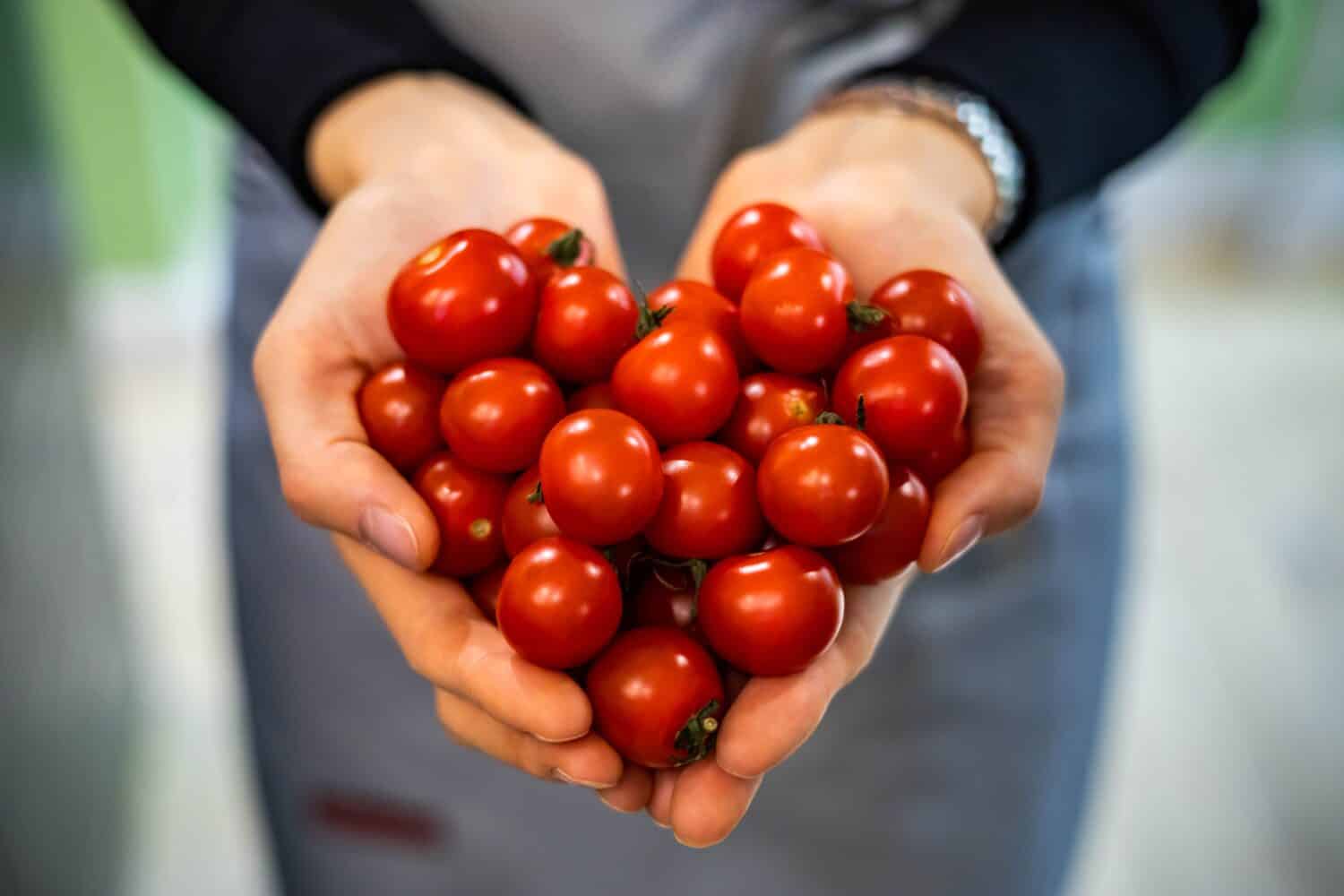While there are numerous variations on the tomato plant, there are seven popular types. Two of these include cherry tomatoes and grape tomatoes. But what exactly are the differences between cherry vs. grape tomatoes? While both are small and can appear similar in shape and appearance, there are some subtle differences. Cherry tomatoes are larger than grape tomatoes, the two have different shapes, as well as calorie and water content (via Healthline). Cherry tomatoes are generally juicer, which makes them the preferred type in certain recipes. But, either tomato type can be added to numerous dishes to provide that fresh taste of a ripened tomato.
In this post, we’ll talk about the differences between cherry vs. grape tomatoes in depth. Learn about the history of tomato plants and get an introduction to how they are grown. You’ll come away with some recipe ideas and a better understanding of these two types of tomatoes. Keep on reading as we get to the root of these delectable additions to any salad, or pasta dish.
Cherry vs. Grape Tomatoes: How Are They Different?
The major differences between cherry vs. grape tomatoes come down to size, shape, flavor, and nutritional content. Tomatoes of all kinds grow in numerous shapes and colors, but when considering cherry vs. grape tomatoes, there are some ways to spot the type that's growing. Cherry tomatoes are larger, juicier, sweeter, and rounder. They often possess a slightly higher calorie count and more water than grape tomatoes, which are smaller, more compact, and meatier than cherry tomatoes.
What Are Cherry Tomatoes?
Cherry tomatoes (Solanum lycopersicum var. cerasiforme) are a type of fruit, though they are often considered a vegetable. They are small in size, usually somewhere between a coin and a golf ball (on the larger end). Cherry tomatoes are round in shape and come in variations of red, orange, yellow, green, and even purple shades. They grow from a flowering plant in the nightshade family (via Brittanica).
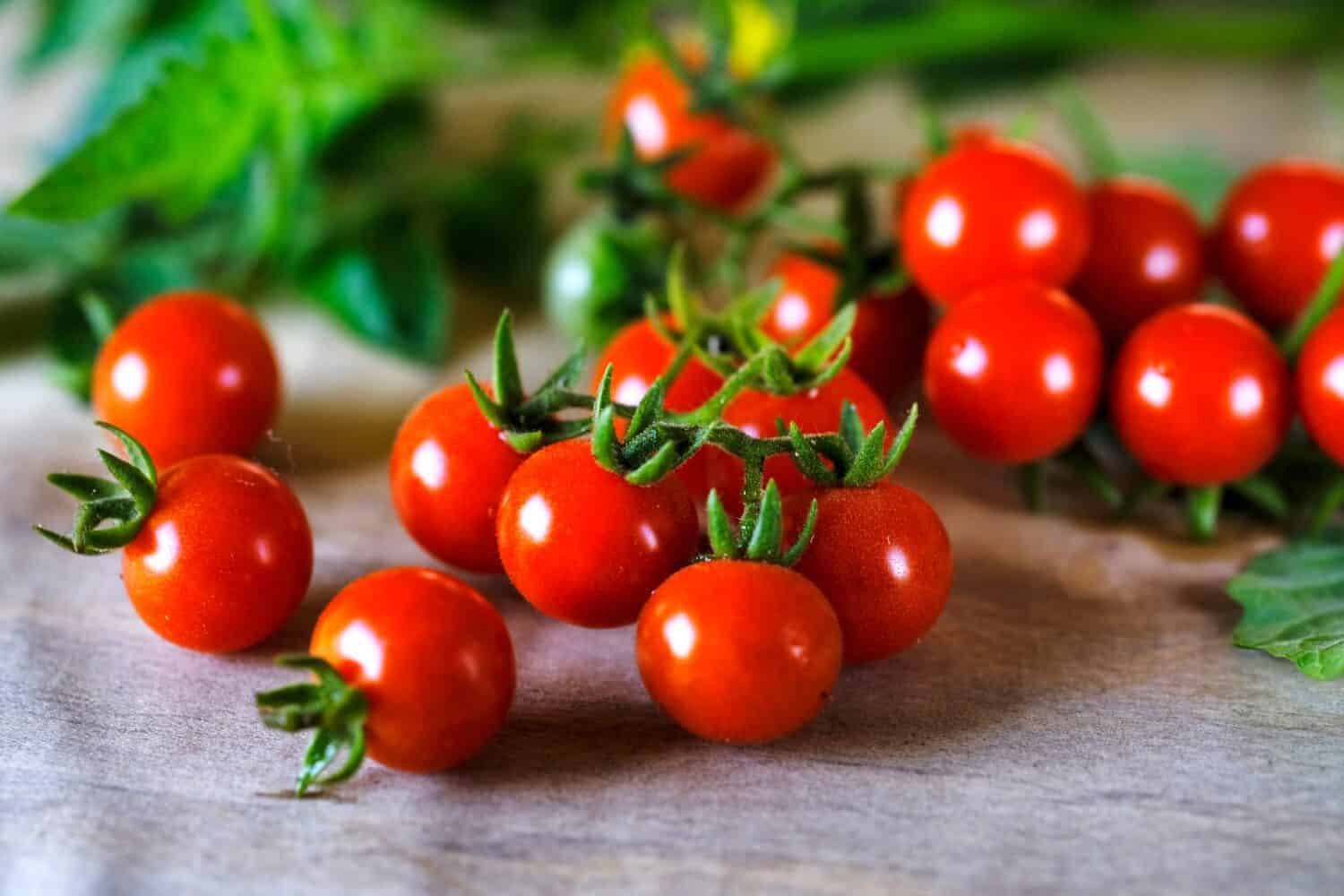
Small and round are two great characteristics to help you tell cherry tomatoes from other varieties.
©Vinayak Jagtap/Shutterstock.com
What Are Grape Tomatoes?
Grape tomatoes are ovular in shape, with less water content than cherry tomatoes. Because of this, they have less of a sweet flavor. They are generally meatier and chewier due to their compressed shape and higher volume of fruit meat to juice and water. Southern Living notes that grape tomatoes are slightly easier to transport and have a longer shelf-life than cherry tomatoes. This is due to their thicker skin.
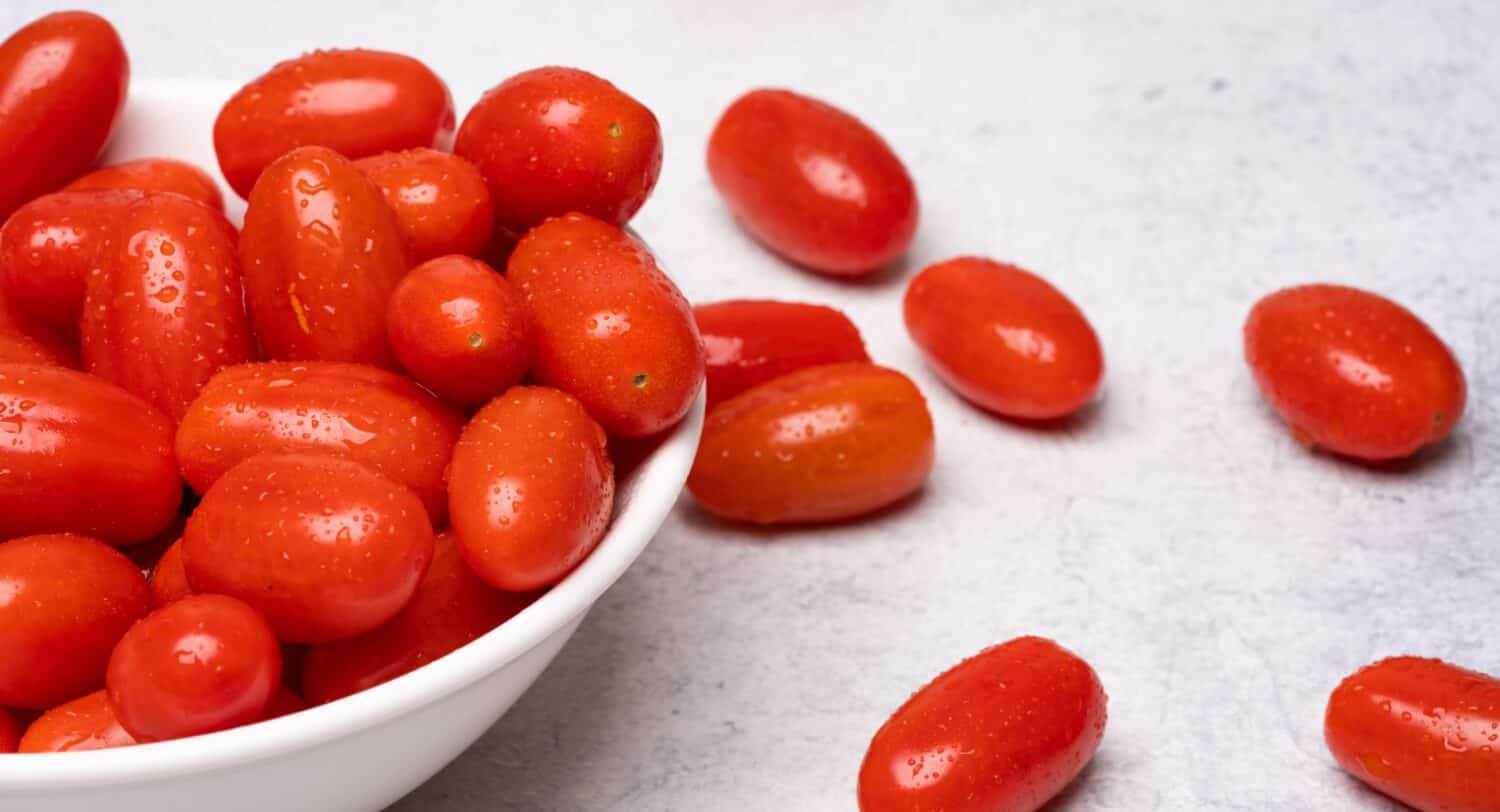
Grape tomatoes have a more ovaline structure and a lower water/juice content than cherry tomatoes.
©banu sevim/Shutterstock.com
The History of Tomato Plants
There is evidence that tomatoes have been growing for thousands of years. They originated in western South America, and the name is a modernization of the Náhuatl Aztecian work tomal, meaning “fat water fruit.” From its origins, the Spanish trade routes brought the tomato plant to Europe around the 16th century. Initially, there was some hesitancy since it comes from the family of nightshade plants, which are typically poisonous. It was grown as a decorative plant in France and Italy where they had a number of names for the confounding colored fruit. In Italy was referred to as “Pomodoro,” meaning golden apple, which suggests an orange or yellow variation of the fruit.
Finally, the tomato made its way to the States via Europe and had famous growers the likes of Thomas Jefferson. States like Louisiana finally used it as a vegetable around the 1800s, but it didn't gain popularity as an ingredient for cooking until the 20th century. Nowadays, tomatoes are grown commercially, and locally. They can be prepared in numerous ways, added to all kinds of traditional dishes, and are enjoyed by all kinds of people who still think that tomatoes are vegetables and not fruits! (via University of Vermont).
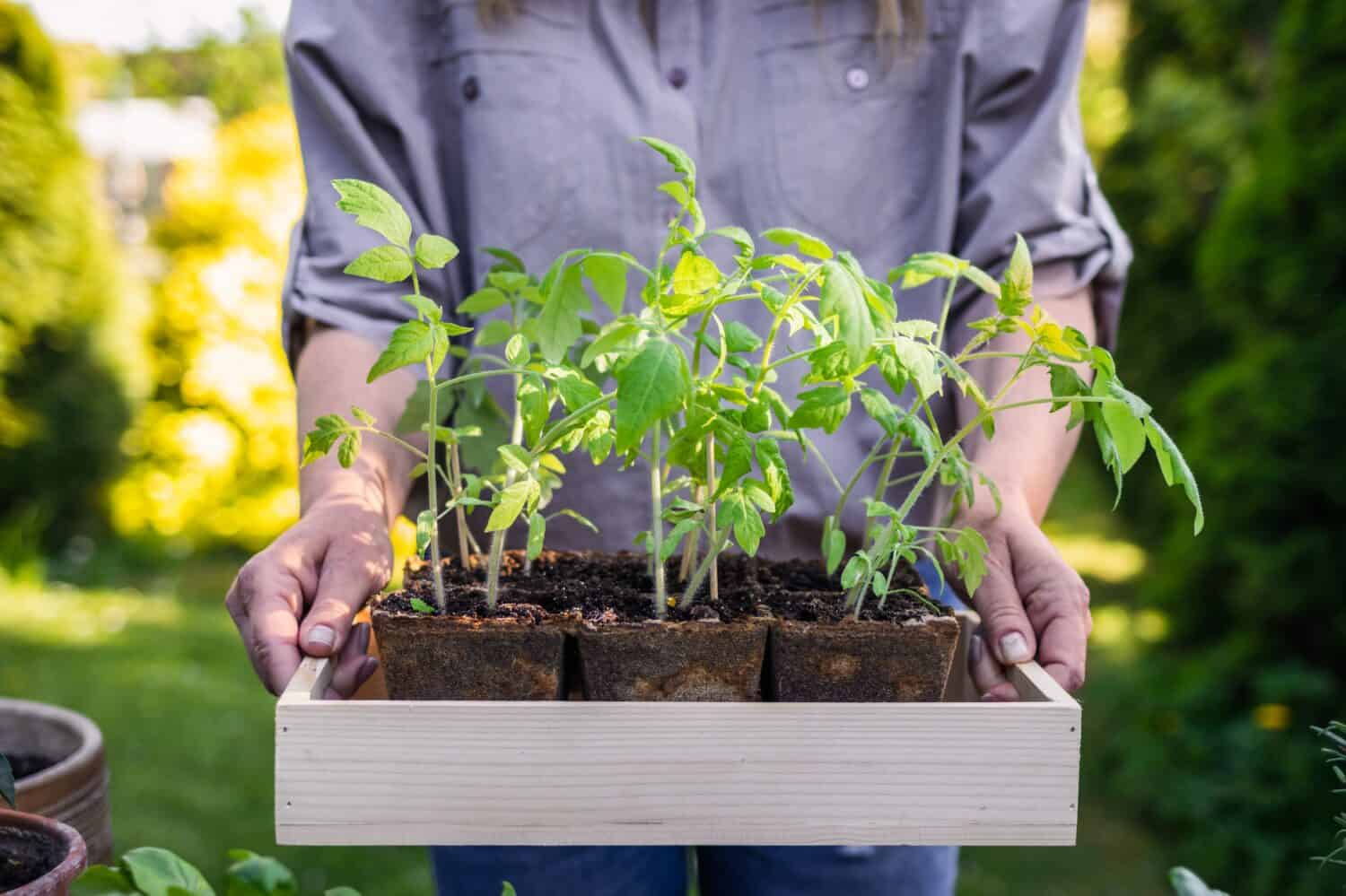
Here you'll see tomato plants in their starting stages.
©encierro/Shutterstock.com
How Tomatoes Grow
Tomatoes grow in warmer seasons, with lots of sunlight and zero freezes. The whole process overall takes between 60-100 days for full harvest. It's popular to plant starters in containers during the springtime, and to transplant them into the ground come the warmer months. You can either get young tomato plants or start with seeds. You'll want to plant your seeds 1/2 an inch deep at least six weeks before the final spring frost. You can transplant your young seedlings when the temperature hits around 50 degrees Fahrenheit for both the day and through the night. With enough water and sunlight, your cherry and grape tomato varieties will be ready to harvest within the 60-75-day marker. Signs of ripening include the coloration and the plumpness of the fruit (via Farmer's Almanac).
The modern tomato exists in all kinds of varieties. The main varieties of tomatoes include cherry tomato, grape tomato, roma, beefsteak, and heirloom. Some people consider vine-ripened tomatoes their own class, this just means they stay on the vine longer to get the most sweetness. There are also green tomatoes, which are typically the larger varieties, taken before they fully ripen to be used in recipes like fried green tomatoes. There are truly so many ways to use this remarkable veggie fruit (via Healthline).
Popular Uses For Tomatoes
Tomatoes can be eaten raw, with goodies like mozzarella cheese, balsamic glaze, and fresh basil. Try them drizzled in olive oil, with just a little salt and pepper. They can be dried in a dehydrator for a tart, sweet addition to salads. They're also great chopped up raw in salads. Tomatoes can be made into all kinds of concentrated savory pastes, and their sweeter varieties can be made into jams and jellies. They make a wonderful side when cooked, or sautéed, and are commonly blended into red sauces.
Recipes With Cherry Tomatoes
Check out some of these great recipes using cherry tomatoes:
- Pasta with Sausage and Cherry Tomatoes Recipe
- Cherry Tomato Salad Recipe
- Charred Cherry Tomatoes With Burrata
Recipes With Grape Tomatoes
Check out some of these great recipes that use grape tomatoes:
Nutritional Comparison of Cherry vs. Grape Tomatoes
To start off — both cherry and grape tomatoes are totally healthy for you. Their differences in terms of nutrition are very minute but still worth mentioning. Overall, tomatoes are full of nutrients, vitamins, fatty acids, and other nutritional compounds. They also have anti-oxidants linked to skin health, heart health, cancer prevention, and immune-system response. According to Healthline, a 1/2 cup of cherry tomatoes has some 31 calories, 6 grams of carbohydrates, 2 grams of fiber, 5 grams of sugar, and 144 mg of sodium. Grape tomatoes, on the other hand, have similar numbers, with a lower calorie count, less water overall, and a higher fiber rating due to their thicker skin. Tomatoes are a great source of vitamins B, A and E. Eating tomatoes is generally a good thing in whatever variety, or form you prefer.
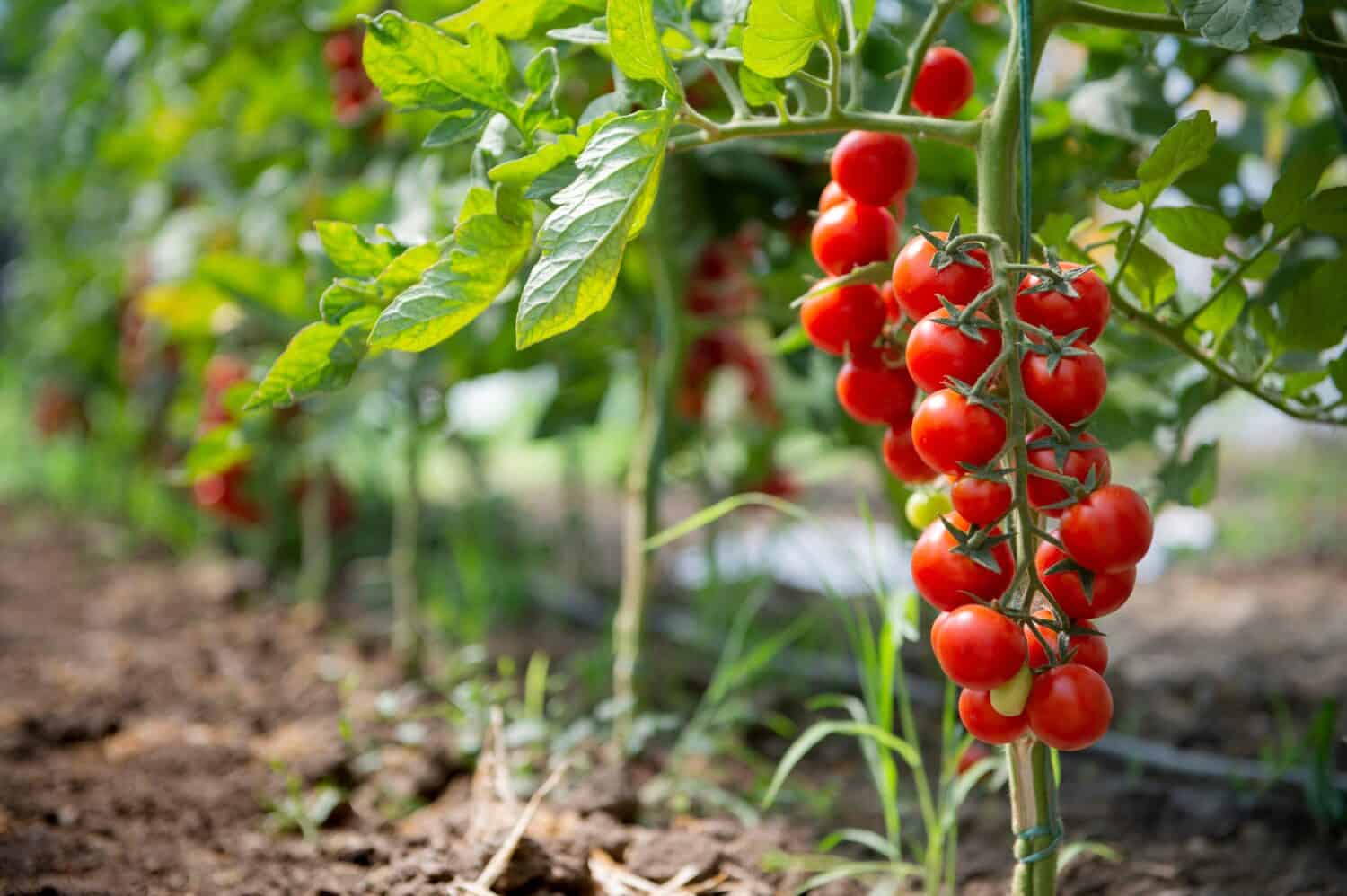
Here you'll see ripened cherry tomatoes on their vine. These are ready to be harvested for cooking!
©vlalukinv/Shutterstock.com
Are Cherry vs. Grape Tomatoes The Same Thing?
When comparing cherry vs. grape tomatoes, it is clear they have some specific differences. They are different in shape, as well as taste. They are also slightly different in terms of their nutritional profile. Cherry tomatoes and grape tomatoes can be swapped out for one another in recipes. Generally, the cherry tomato is larger than the grape, so it may need to be cut smaller to fit the needs of the recipe. Grape tomatoes don't have as much juice as cherry tomatoes, so recipes that depend on that extra water content may need that water to come from another source if you're using grape tomatoes.
Possible Alternatives To Cherry And/Or Grape Tomatoes
If you don't like cherry or grape varieties, why not try one of the larger varieties of tomato? For a tomato substitute, you can get a crunch from bell peppers cucumbers, or green mangoes instead. Though they won't exactly mimic the taste of the tomato, they'll do in a pinch, or if you really don't want a tomato!
The image featured at the top of this post is ©Kostikova Natalia/Shutterstock.com
